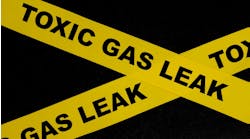“Say something.” That’s the sensible advice often given about how to react when confronted by an unsafe situation. Well, the potential demise of the U.S. Chemical Safety and Hazard Investigation Board (CSB) certainly promises to undermine safety in the chemical industry. After all, the board plays a crucial role in investigating accidents and then sharing its findings and insights with industry to avoid their recurrence. Yet, leading chemical companies, industry groups and professional associations have remained surprisingly silent about the potential defunding of the CSB.
The proposed 2018 Federal Budget released by the Trump Administration in March explicitly states:
“The Budget also proposes to eliminate funding for other independent agencies, including: the African Development Foundation; the Appalachian Regional Commission; the Chemical Safety Board…”
Yet any rational analysis would indicate that defunding the CSB is just plain stupid.
Eliminating the CSB won’t save much money. Its 2017 budget is only about $12 million. That’s a pittance not only in terms of Federal spending (equating to about two-thirds of the cost of one of the U.S. Army’s Black Hawk helicopters) but even compared to the financial impact of a single major incident that could be prevented if a chemical maker realized its failings through the insights given in a CSB investigation report on an accident at a plant similar to its own.
The CSB had suffered a number of significant failings of its own in the not-too-distant past (see: “Turmoil Takes a Toll on Chemical Safety Board”). However, under Vanessa Sutherland, chair since late 2015, the CSB has become more focused and has ramped up its productivity and outreach. (She described what the board is doing and its plans for the future in a relatively recent CP cover story: “Chemical Safety Board Opens Up.”)
Specialists in chemical safety I know invariably praise her efforts and emphasize the critical role the CSB plays. The completed reports of accident investigations provide important guidance about what went wrong and why — and how industry can avoid such incidents in the future. For instance, its latest report, issued in October — on a 2013 explosion and fire at the Williams olefin plant in Geismar, La., that led to two fatalities — not only describes the incident and offers specific recommendations for what that company must do to resolve the deficiencies uncovered but also suggests changes to the American Petroleum Institute’s Standard 521 “Pressure-relieving and Depressurizing Systems” to address issues discovered at the plant (http://goo.gl/1oX1oB).
In addition, the CSB’s videos serve as crucial resources to bring such events, their consequences and lessons to life. The latest, “”Blocked In” released in January, looks at the Geismar explosion and fire. It provides compelling viewing — dramatically recreating the event and illustrating the specific deficiencies that set the stage for the incident — that staff at most process plants should watch, not the least to combat complacency about process safety. As CP Editorial Board member and safety guru Roy Sanders notes in his article “Stimulate a Sense of Vulnerability”: “Some of these videos are gut wrenching. All are well done — and are available free of charge. Presenting selected videos to all employees associated with those potential situations increases vulnerability awareness.”
For more on these resources and what the CSB currently is working on, go to: www.csb.gov.
Now, some in Congress pronounced the Trump Administration’s proposed budget dead on arrival. However, that’s no reason for complacency.
Given the CSB’s important role, I am amazed — and disheartened — that so few people, companies and groups have spoken out publicly in support of the board. We must rally behind the CSB so lawmakers understand how much we value it. Hopefully, Congress will do the right thing and restore the CSB’s funding. Otherwise, most assuredly we will wind up regretting our reticence to fight this ill-advised false economy.


